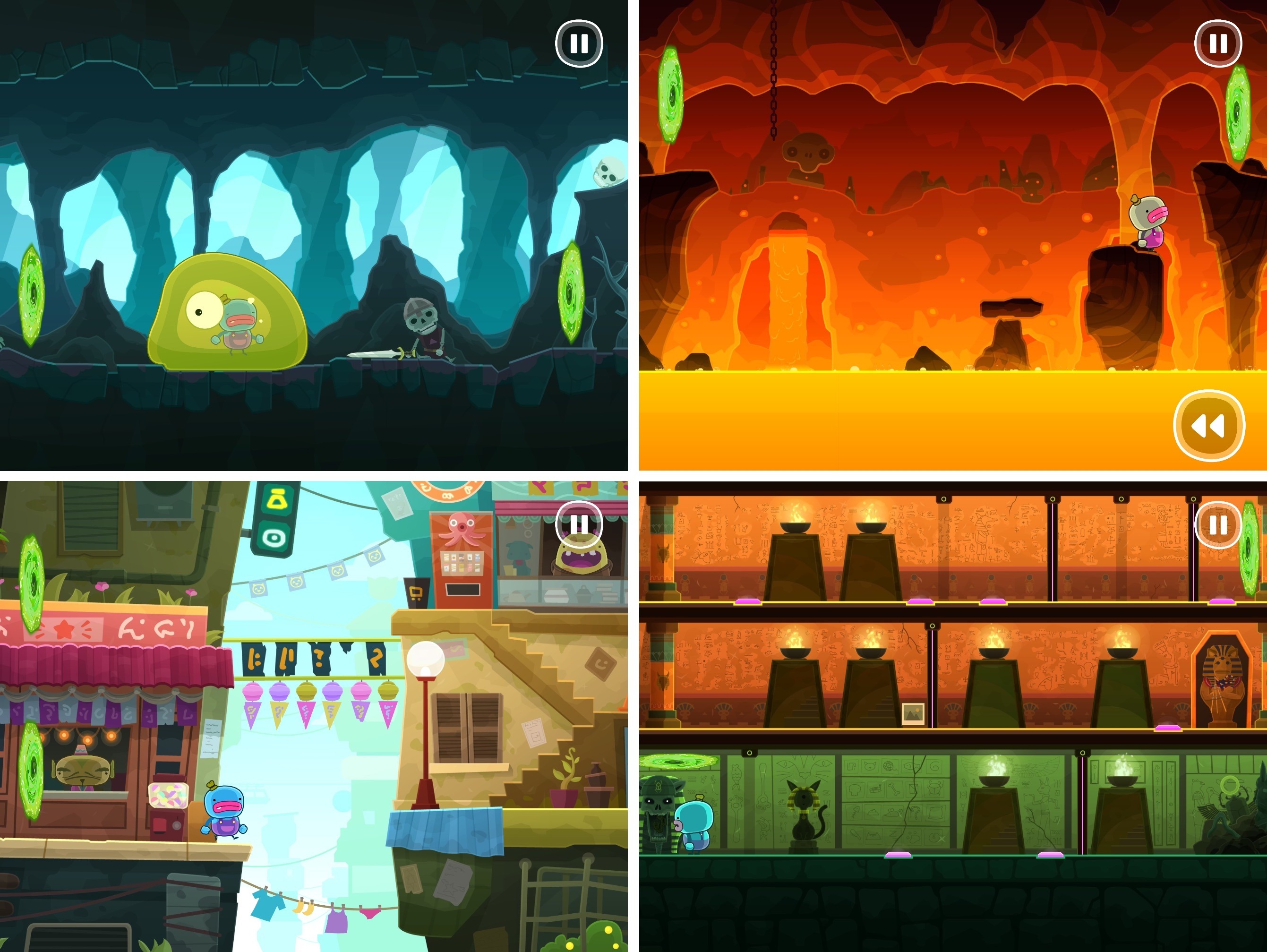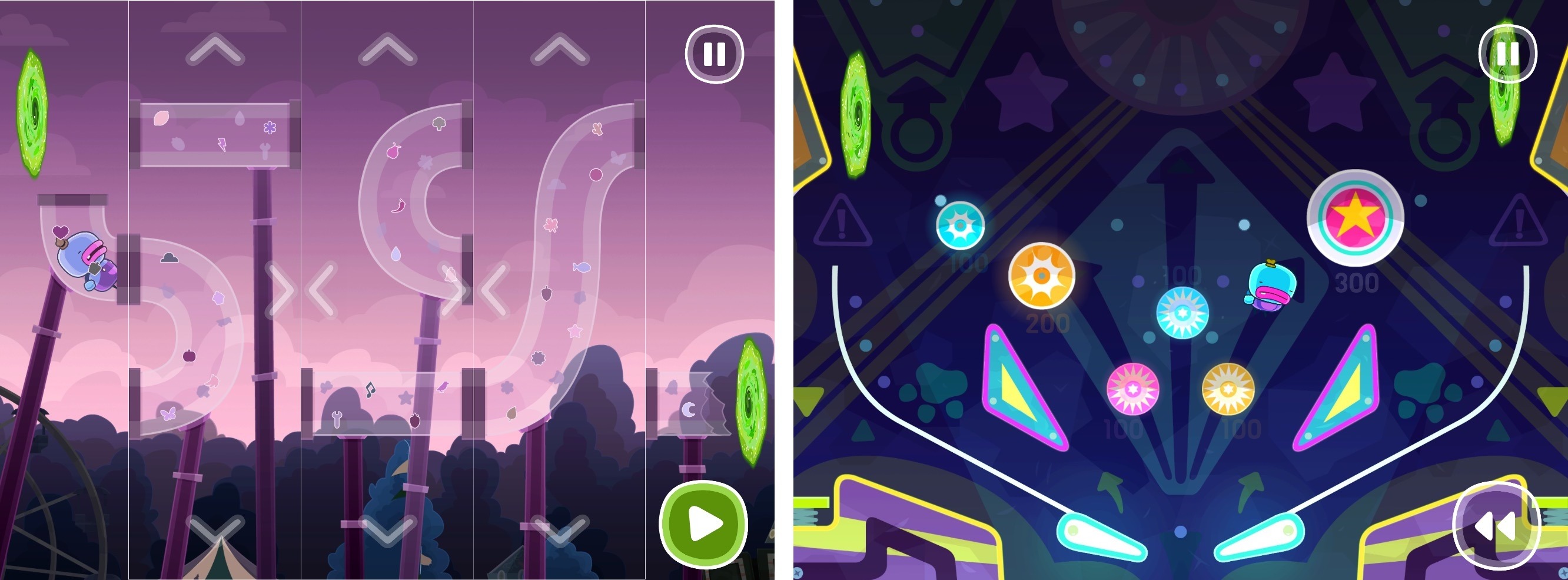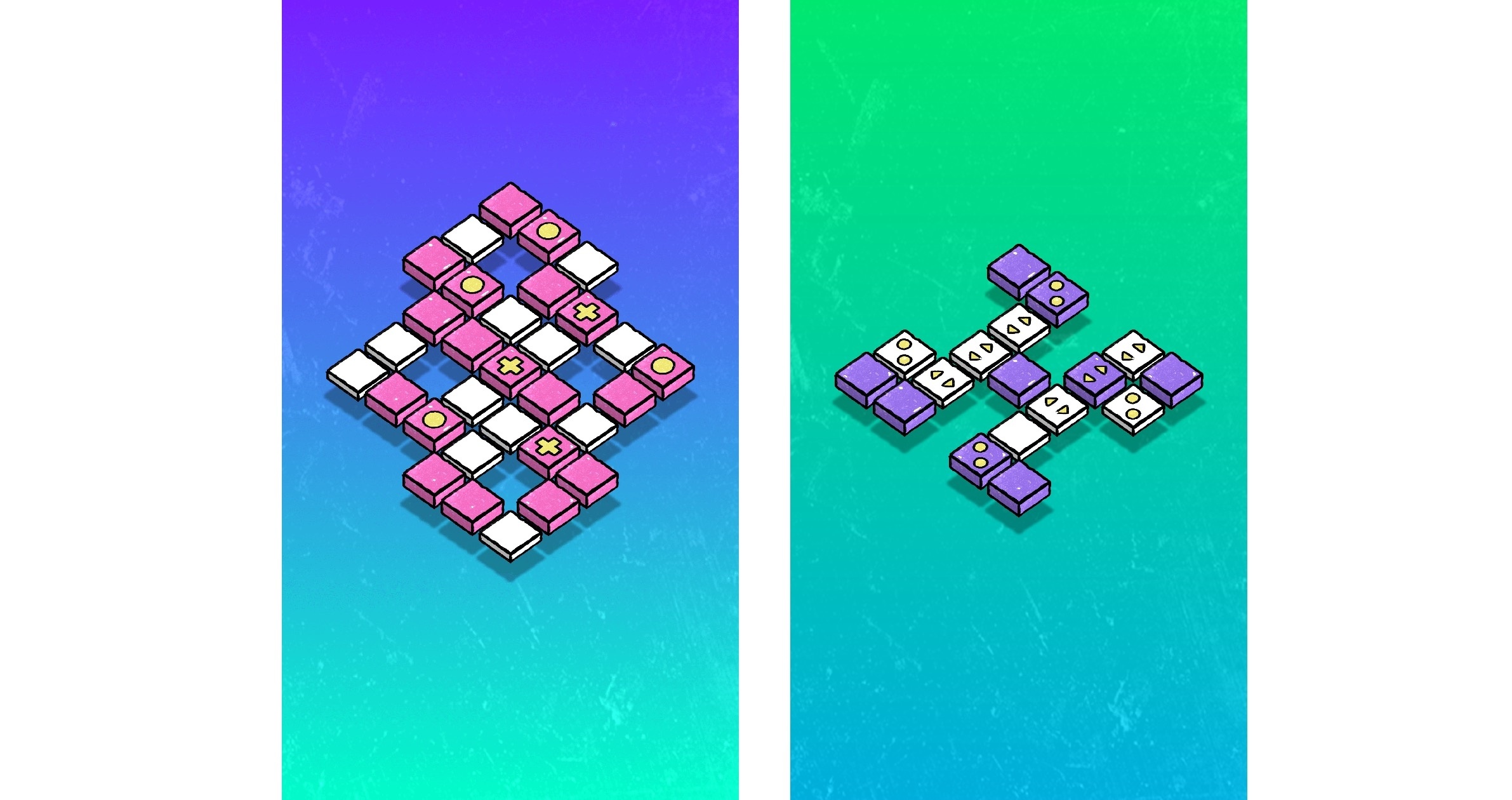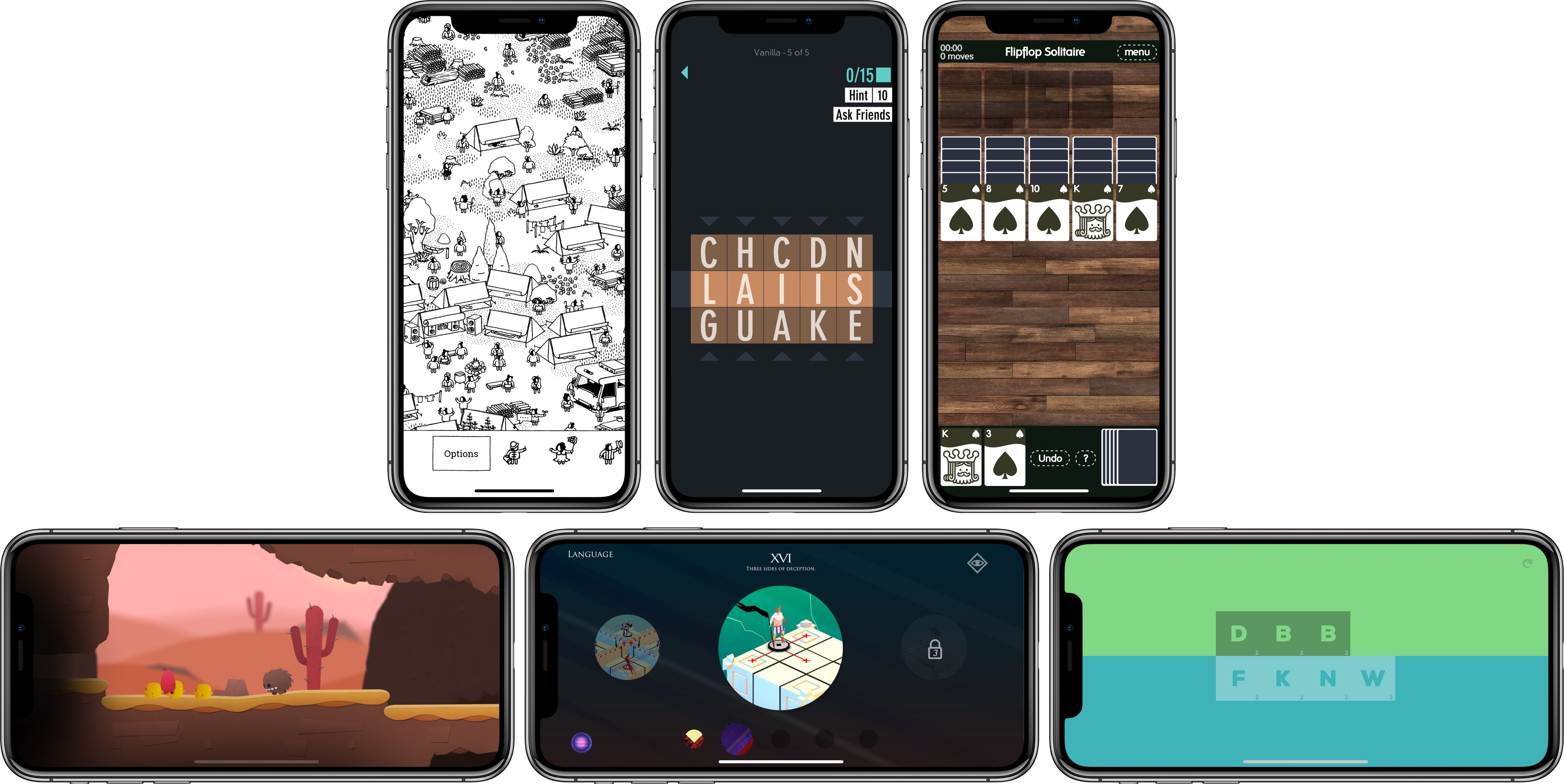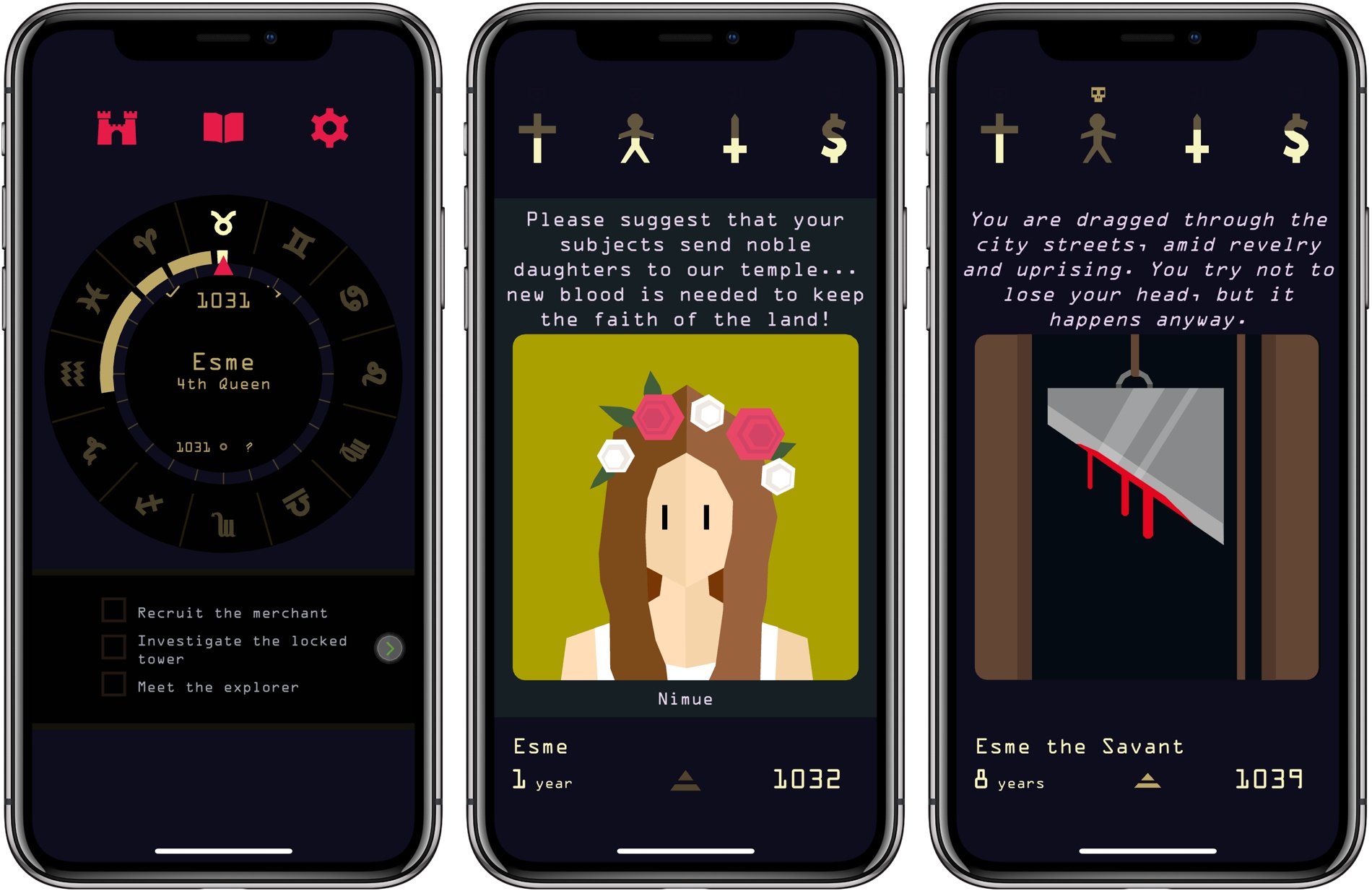Earlier this month Alike Studio released Bring You Home, a charming puzzle game about a blue alien on a quest to save its pet from thieves. It’s a delightful game that showed up one day with little fanfare. The game, from the creators of Love You to Bits, was teased almost a year ago, but its sudden appearance on the App Store means it hasn’t gotten the coverage it deserves. That’s a shame because this is a low-key but captivating game that should appeal to a wide audience.
Exploration is at the core of Bring You Home. As soon as the alien’s pet is whisked away, it leaps out the window after the thieves landing face-first on the ground. Time rewinds, and you’re shown how to swipe panels up and down until there’s a cart of hay under the window to break the alien’s fall. It’s a simple mechanic similar to the hit game Framed but executed with a style and personality that fits Bring You Home.
The goal is just as simple. By manipulating the environment around the alien, you help steer it from scene to scene in pursuit of the thieves. As you move through Bring You Home, new layers are added to the gameplay. Instead of just cycling through panels vertically, you can swap their position horizontally too. Next, the game adds multi-step puzzles, which require you to rearrange the scene, pause, and make further adjustments. Along the way, there are also collectible photos featuring your alien and his pet, which is a nice touch suggesting that it’s ok to explore, fail, and explore some more.
There is an absurd logic to each of the nearly 50 levels of Bring You Home, which rewards thoughtful examination. There are no time limits or penalties for failure, which encourages a leisurely, calm approach. Sure, you can power through Bring You Home quickly, but that’s not the point. Trial and error is part of the fun. This is a game best-enjoyed at a pace at which you can absorb each scene’s brightly-colored, playful animations.
Bring You Home is a Universal app that’s also available on the Apple TV. The game looks great on a big screen TV, but the controls work better on an iOS device, so on balance, I prefer to play on my iPad. Also, achievements are tracked in Game Center, and your progress is synced between devices via iCloud, which I always appreciate.
Bring You Home is a relaxing game with a playful, sweet personality that will appeal to kids and adults alike. The puzzles range from easy to challenging without ever becoming frustrating, which makes it an excellent choice for relaxing on a quiet afternoon.
Bring You Home is available on the App Store.


